The Tisza or Tisa is a river in Central Europe.
Tisza may also refer to:
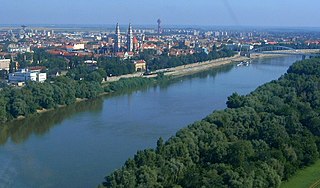
The Tisza, Tysa or Tisa, is one of the major rivers of Central and Eastern Europe. It was once called "the most Hungarian river" because it used to flow entirely within the Kingdom of Hungary. Today, it crosses several national borders.

Count István Imre Lajos Pál Tisza de Borosjenő et Szeged ; was a politician who served as prime minister of Hungary from 1903 to 1905 and from 1913 until 1917. He was also a political scientist, international lawyer, macroeconomist, member of the Hungarian Academy of Sciences and champion duelist. The outbreak of World War One defined his second term as prime minister. He was killed by leftist revolutionaries on 31 October 1918 during the Aster Revolution, the day Hungary declared its independence, dissolving the Dual Monarchy or Austro-Hungarian Empire. Tisza was the most zealous adherent of the Dual Monarchy among the Hungarian political leaders and pleaded for consensus between liberals and conservatives. As a Member of the Imperial Council since 1887, he came to fear a political impasse in the conflict between the unyielding temper of the Emperor and the revolutionary spirit of the extremists. Tisza was bitterly unpopular among ethnic Hungarian voters and therefore - similarly to his father Kálmán Tisza - he drew most of his votes from ethnic minorities during the parliamentary elections.

Kálmán Széll de Duka et Szentgyörgyvölgy was a Hungarian politician who served as Prime Minister of Hungary from 1899 to 1903.
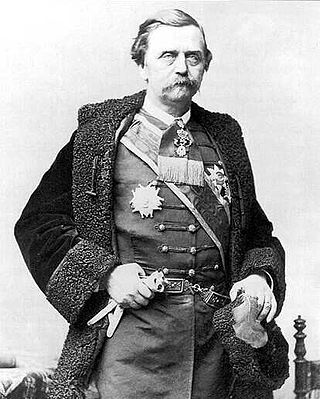
Count Gyula Szapáry de Szapár, Muraszombat et Széchy-Sziget, Arhaically English: Julius Szapáry, French: Jules Szapáry was a Hungarian politician who served as Prime Minister of Hungary from 1890 to 1892.
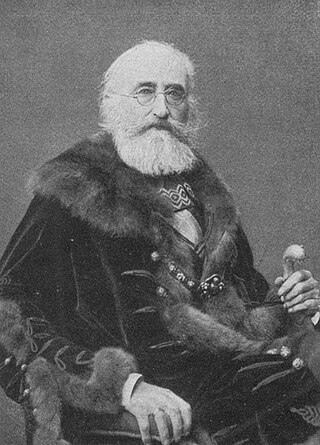
Kálmán Tisza de Borosjenő was the Hungarian prime minister between 1875 and 1890. He is credited with the formation of a consolidated Hungarian government, the foundation of the new Liberal Party (1875) and major economic reforms that would both save and eventually lead to a government with popular support. He is the second longest-serving head of government in Hungarian history.
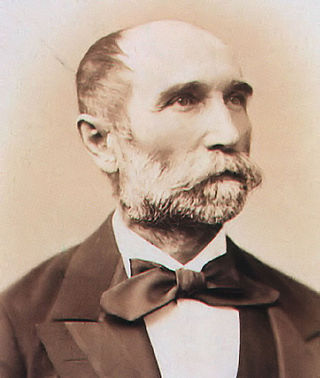
Count István Bittó de Sárosfa et Nádasd was a Hungarian politician who served as Speaker of the House of Representatives of Hungary from 10 September 1872 to 23 March 1874 and as Prime Minister of Hungary from 1874 to 1875.

Novi Bečej is a town and municipality located in the Central Banat District of the autonomous province of Vojvodina, Serbia. The town has a population of 13,133, while Novi Bečej municipality has 23,925 inhabitants.

The Lands of the Crown of Saint Stephen, informally Transleithania, were the Hungarian territories of Austria-Hungary, throughout the latter's entire existence, and which disintegrated following its dissolution. The name referenced the historic coronation crown of Hungary, known as the Crown of Saint Stephen of Hungary, which had a symbolic importance to the Kingdom of Hungary.
The Tisa is a river in Central Europe.

Bocicoiu Mare is a commune in Maramureș County, Maramureș, Romania. It lies 9 kilometres east of Sighetu Marmației, across the Tisza River from Velykyy Bychkiv, Ukraine.

Câmpulung la Tisa is a commune in Maramureș County, Maramureș, Romania. It is composed of a single village, Câmpulung la Tisa.

The Tur is a tributary of the river Tisza. Its sources are located in the Oaș Mountains in Romania. The Tur starts at the confluence of its headwaters, the Gorova and Turișor. It then flows through Satu Mare County in Romania. The main town on the Tur is Turulung. The river then forms the border between Romania and Ukraine on a reach of 5.2 km (3.2 mi), and the border between Romania and Hungary for 1.1 km (0.68 mi). The Tur joins the Tisza river near Szatmárcseke in Hungary. Its basin size is 1,144 km2 (442 sq mi).
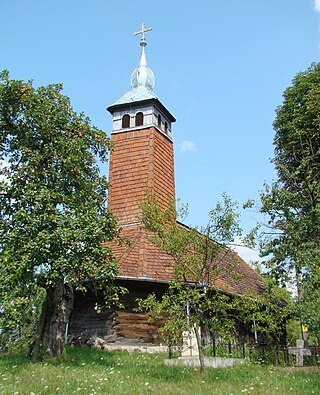
Burjuc is a commune in Hunedoara County, Romania. It is composed of six villages: Brădățel (Bradacel), Burjuc, Glodghilești (Glodgilesd), Petrești (Petresd), Tătărăști (Tataresd), and Tisa (Tisza).

The Hungarian–Romanian War was fought between Hungary and Romania from 13 November 1918 to 3 August 1919. The conflict had a complex background, with often contradictory motivations for the parties involved.

The Aster Revolution or Chrysanthemum Revolution was a revolution in Hungary led by Count Mihály Károlyi in the aftermath of World War I. It resulted in the foundation of the short-lived First Hungarian People's Republic.
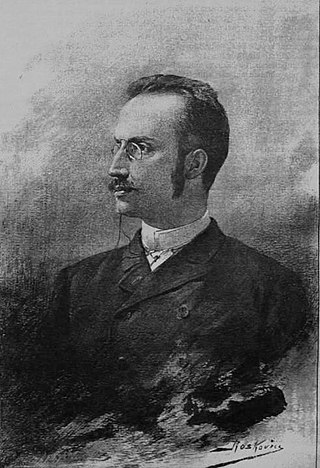
Albert Berzeviczy de Berzevicze et Kakaslomnicz was a Hungarian politician, who served as Minister of Religion and Education between 1903 and 1905.
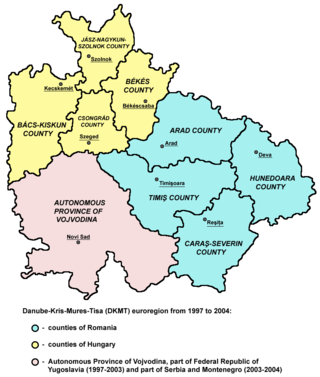
The Danube–Criș–Mureș–Tisa Euroregion is a euroregion located in Hungary, Romania and Serbia. It is named after four rivers: Danube, Criș, Mureș and Tisa.
The National Party of Work was a liberal political party in Hungary between 1910 and the end of World War I. The party was established by István Tisza after the defeat of the Liberal Party in the 1905 and 1906 elections. The party was led by László Lukács, who served as Prime Minister from 1912 to 1913. As its predecessor the Liberal Party, the new party also remained bitterly unpopular among ethnic Hungarian voters, and could rely mostly on the support of ethnic minority voters.
The Liberal Party was a political party in Hungary between 1875 and 1906.

Multinational Engineer Battalion Tisa is an engineering unit intended to quickly respond to flooding and other natural disasters in the Carpathian Region. Initial idea for creation of such unit was voiced by Ukraine in December 1998. Battalion was created on November 15, 2002 after Heads of General Staff of Hungarian, Romanian, Slovak and Ukrainian Armed Forces signed the Technical Arrangement on Implementation of Intergovernmental Agreement on Multinational Engineer Battalion Tisa in Budapest. The name comes from river Tisza.